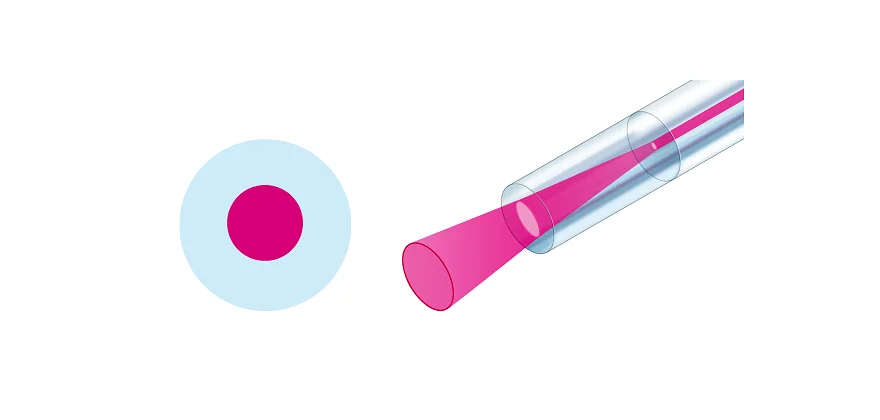High Power Phenomena
- Bulk effect: Stimulated Brillouin Scattering
- Fiber end-face effect: Scorching of the fiber end-face or Photocontamination (this effect can be limited by fiber end caps)
Stimulated Brillouin Scattering/Brillouin Threshold
Stimulated Brillouin Scattering (SBS) is an effect that limits the maximum power that can be transmitted by the fiber. Unlike photo-contamination and direct scorching of the fiber end-face, which limit the power that can be transmitted at the fiber end-face, stimulated Brillouin scattering is a bulk medium effect.
The electro-magnetic wave propagating within the optical fiber is scattered by acoustical phonons that are caused by electrostriction. The acoustical phonons induce periodic changes in refractive index (elasto-optical effect) that serve as a Bragg grating, reflecting the incoming radiation. The wavelength of the reflected radiation (Stokes photon) is shifted towards higher wavelengths.
If the input power exceeds the Brillouin threshold Pcr , almost the entire radiation is reflected. The threshold is defined as:
Aeff ∼ (MFD)2 = effective core diameter
Leff = effective cable length, dependent on fiber losses
gB = gain coefficient of the Brillouin spectrum
The critical power is wavelength-dependent and influenced by other fiber parameters. The amount of power that can be transmitted by a particular fiber needs to be determined for each fiber individually.
